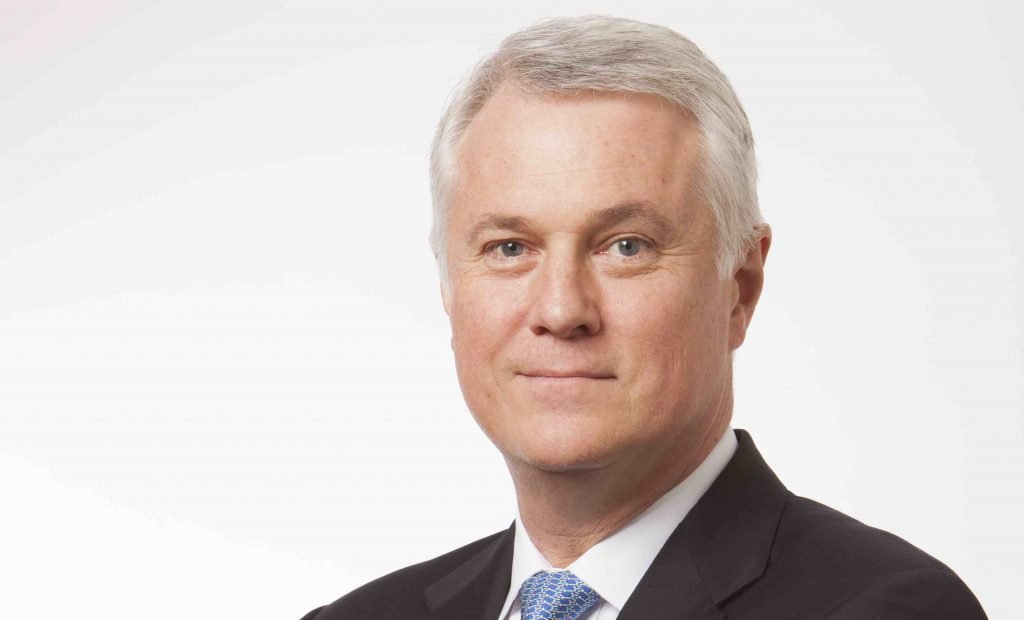
Sponsored Q&A: Pemberton’s Symon Drake-Brockman on private debt investing for local government treasurers and pension funds.
Room151: Tell us a little bit about private debt investing and how Pemberton operates in this field?
Symon Drake-Brockman (SDB): Private debt as an asset class has developed over the past 10 years from being primarily focused on infrastructure and property, and it has now evolved into lending to companies owned by private equity groups, called sponsor loans, and lending to privately-owned corporates. This is sometimes referred to as direct lending and is a growing market and one that institutional investors are moving into as the search for yield continues given the low interest rate environment.
As to how we operate, we are set up very much like a banking group, with extensive credit disciplines and monitoring capabilities and we look to invest in companies based on their market position and the quality of their client base. We operate in the mid-market and look at all sectors across the market and all geographies across Europe. The only real restrictions on our lending, other than the credit quality of the borrower, are based on our social responsibility criteria.
Room151: Pemberton is owned 40% by L&G, what was the rationale on them taking a stake in you?
SDB: L&G made a decision about four years ago to allocate part of its balance sheet to private debt, seeing that it offers enhanced returns compared to the bond market. After an extensive study of managers operating in market, they chose to work with us as a manager of their capital. On the back of that they also saw the opportunity to become equity investor in the business. They like our approach to risk management, our pan-Europe office network and the transparency we are able to bring to the asset class through our credit ratings system, a somewhat unique development in the market.
Being backed by one of the top insurance firms in Europe gives our investors and borrowers a high degree of confidence in our capabilities and motivations. It is clear we are not just moving in for a short-term opportunity and that we are a long term participant in this growing market.
Room151: You’ve been involved in credit markets now for over 20 years, what structural changes have you seen that prompted you to set up Pemberton?
SDB: The fallout from the financial crisis in 2008 led banks to prioritise investment grade loans and shrink their balance sheets by moving away from quality companies operating in the middle-market.
We set up Pemberton in 2012 solely to focus on mid-market corporate lending as there was an opportunity to set up an asset management company bringing both together to become an alternative lender, meeting a demand for high-yielding investments, with banks creating more space in the market for us to invest in. A number of players in infrastructure and real estate have been doing direct lending for decades and we saw the corporate sector as a new opportunity for growth.
Room151: With all the changes going on how does Pemberton fit into the lending landscape, and how do you see Pemberton’s role within the UK?
SDB: One of our benefits is we are managing capital in our funds for around eight to ten years from clients and making loans of five to eight years. This means that the funding base is always longer than the maturity of the loans. We never face the liquidity mismatch risk that banks do where they take short-term deposits and make long-term loans.
The banks faced a systematic problem 10 years ago when liquidity was withdrawn all at once, and this is why private debt will become a more important part of the funding market — it is de-risking the system. Essentially it is bringing more and more long-term funding out of insurance and pension funds to invest in the space and this reduces the reliance on the banking sector.
If you are a finance director of a UK company, the ability to source five or seven-year money makes it easier to manage the business over the medium term and this is the role that Pemberton fulfils with UK corporate borrowers. We act as a long-term capital provider to these business to help them make acquisitions, build new factories etc, all of which goes to support UK economic growth.
Room151: The term “shadow banking” seems to have died down, does this reflect an acceptance by regulators for the needs of capital such as yours?
SDB: As we discussed above, there is no liquidity mismatch with private debt funds, and I think the regulatory authorities have now realised that direct lending can provide very stable money. There are some concerns over peer-to-peer lending, with questions over whether retail investors understand the risks they are taking but this is a different asset class to the one that we are working in.
Room151: Against this regulatory backdrop how do you ensure you have the same level of risk management at Pemberton as you would at major banks?
SDB: Our structure is very similar to a bank and we have tried to replicate the strengths of that model. We have portfolio managers looking at the construction of pools of loans, complemented by an independent credit function. The chief credit officer reports directly to me. Her role is to provide challenge around transactions — their structure and credit quality. She writes an independent review that comes to our investment committee and that will help determine whether we do the deal or not. We spend a lot of time analysing companies’ revenue flows and balance sheets, in the same way as a bank would do.
Room151: If we now turn to demand for the asset class, what interest have you seen from local authorities?
SDB: Local authorities have been active in this asset class since very early after the banking crisis and as a result, we have a number of local authorities in our pan-European strategy and in our UK strategy which lends to domestic companies. These strategies provide very attractive returns to local authority pension funds compared to gilts or bonds.
We have recently launched a supplier finance strategy for short-term investments that provides an alternative to money market funds, with a yield of circa Libor+1%. That is attractive to the treasury side, where they are trying to manage cash but are struggling to find an attractive rate of return. It is insurance wrapped and has a single “A” credit rating — giving an attractive return for good quality credit.
Room151: What sort of returns are available to investors and is this typically a short-term or longer-term investment?
SDB: The returns within direct lending can range between 6% and 12% net to investors, for the type of funds that we manage. We have two long-term strategies which are at the lower end of this range, the lower risk European and UK senior secured corporate lending strategies we spoke about earlier. We also have a credit opportunities strategy, looking at senior and subordinated loans, targeting 11-12% yields. Some companies would rather borrow high yielding debt instead of issuing more equity which would dilute their ownership. This can provide an attractive return to investors.
Alongside the short dated, high credit quality supplier finance strategy mentioned a moment ago this gives a good spread of maturities, returns and risk profiles for both the pensions and the treasury side.
Room151: What do you think investors should focus on or be wary of in this asset class?
SDB: The key risk for investors is default risk, namely that borrowers are unable to pay interest or repay principal and the Fund suffers a loss. We are therefore very focussed on ensuring that we select the best opportunities for our funds, and we spend a lot of time working with the management teams of our borrowers to understand the key risks for each borrower, to make sure that we get comfortable with the risk profile for each loan that we make.
A lot of this comes down to experience, and the team here has worked together for 15 or more years, and we have all been in the industry for more than 20 years each so we have been through two to three credit cycles and therefore know what to look out for when assessing investment opportunities. If and when things do go wrong, our team has very good restructuring experience: our chief credit officer ran GE Capital’s restructuring business for 10 years. We do expect that over time, one or two deals will have challenges and you have to be able to work with the company and management team to get things back on track, potentially restructuring the cost base to get the money repaid, and having this skillset in-house is very important to us.
On the positive side however, the asset class has proven itself, time and time again, to be highly attractive throughout the economic cycle. In 1997, 2001 and 2008 returns were higher than investment grade bonds and we expect the resilience of the asset class will continue.
Rooom151: How do you think Brexit will affect your business?
SDB: Every grey cloud has a silver lining. Brexit will have an impact of a gradual slowdown in the UK economy while we go through the process. That has led to a number of banking institutions slowing their lending in UK until they see more certainty. For an organisation like us, where we are loaning long term capital, this allows us to find more attractive opportunities and it allows us to be more selective around companies we want to lend to.
The UK economy has a number of adjustment mechanisms allowing it to adapt to economic changes. In addition to a flexible labour policy, it has a floating exchange rate that can take away some of the pressure. This means, for example, that the industrial production numbers continue to be relatively good. Consumer spending has slowed down a bit, but fundamentally it continues to grow at 1% plus. That means there are a number of good UK companies providing attractive opportunities for us to capitalise on.
Room151: What is the future for the asset class?
SDB: This is a relatively new asset class: private debt in Europe is probably only five to seven years old but is one of the few asset classes where the ability for institutions to grow their exposure is matched by lending opportunities on the other side. If you look at the size of direct lending to mid-sized companies, we believe that it is a multi-trillion pound market across Europe and the capacity for institutions to be able to put money in grows every year. As banks continue to shrink going forward in reaction to new regulatory pressures such as Basel III, we believe that the growth prospects are extremely positive over the next decade.
Symon Drake-Brockman is managing partner at Pemberton Asset Management.
Pemberton will be exhibiting at the 9th Local Authority Treasurers Investment Forum on September 14th, 2017.












